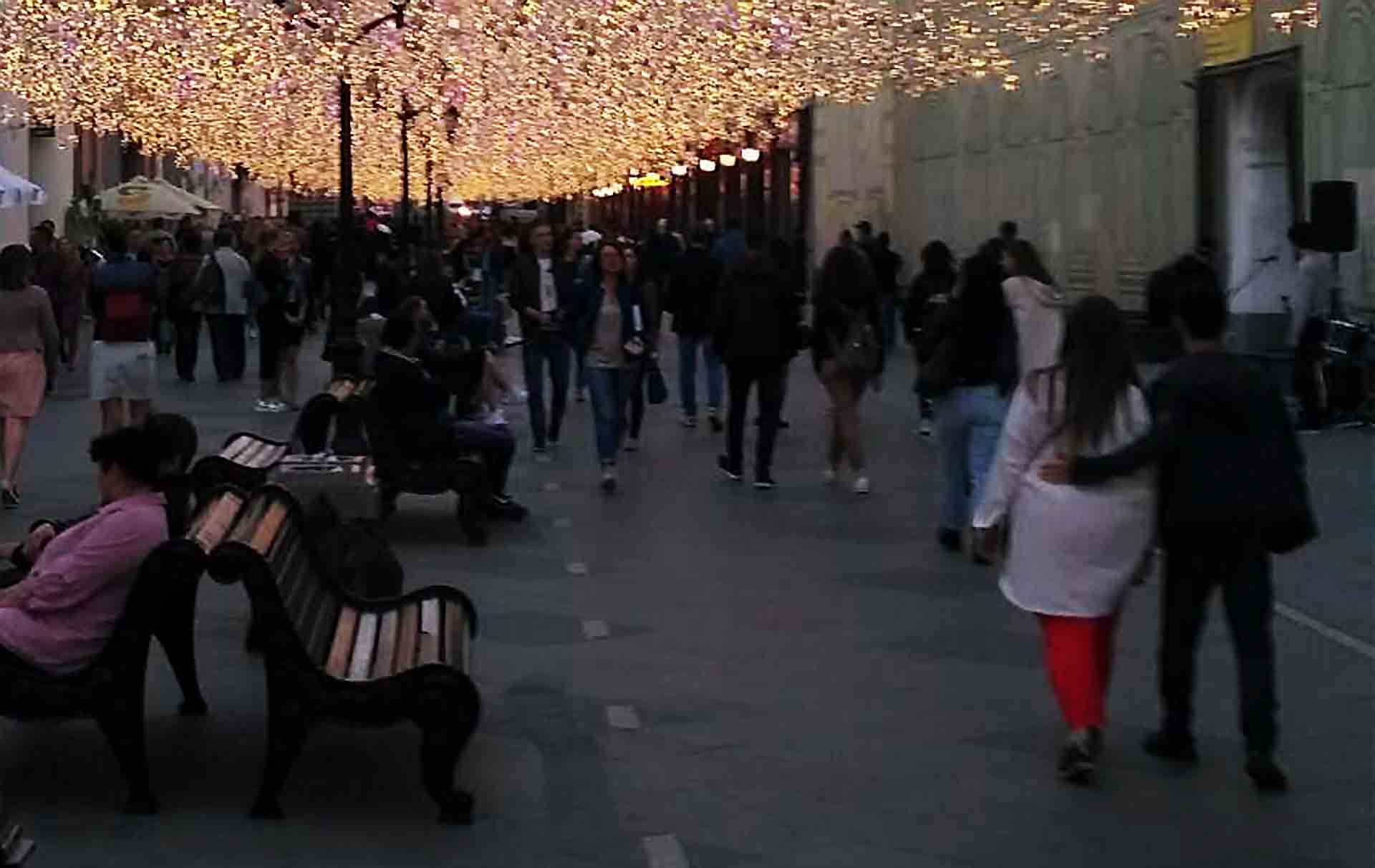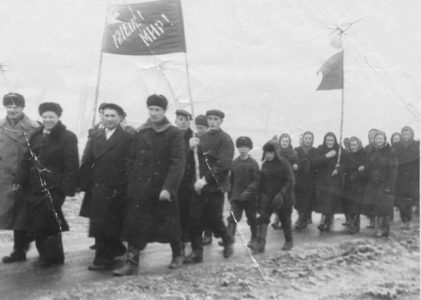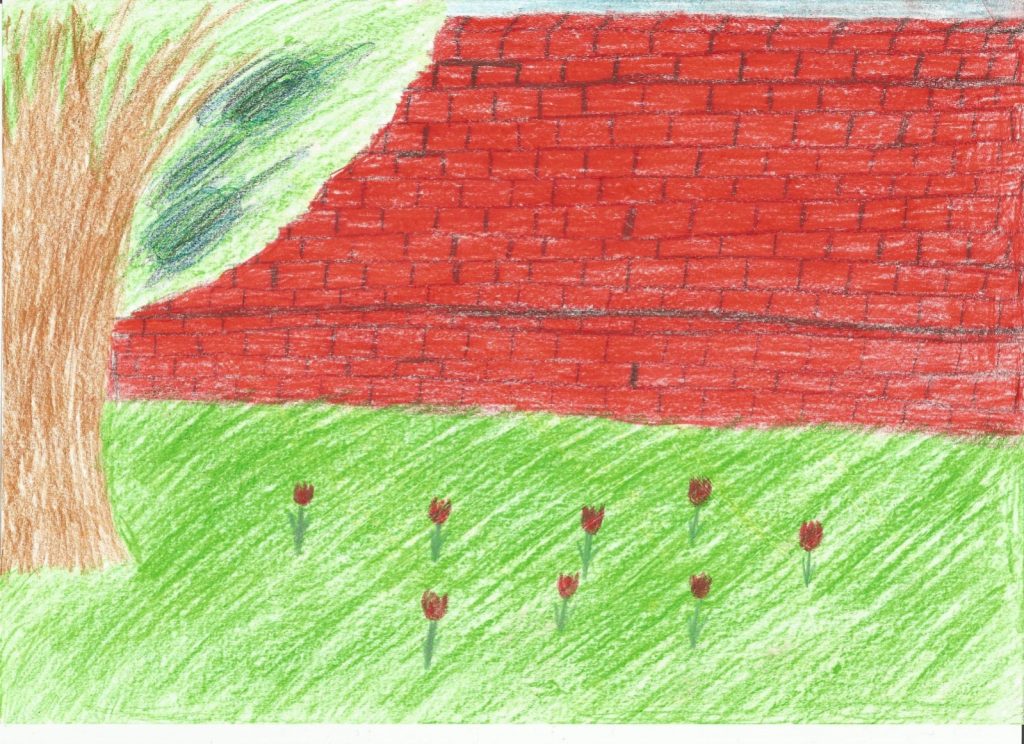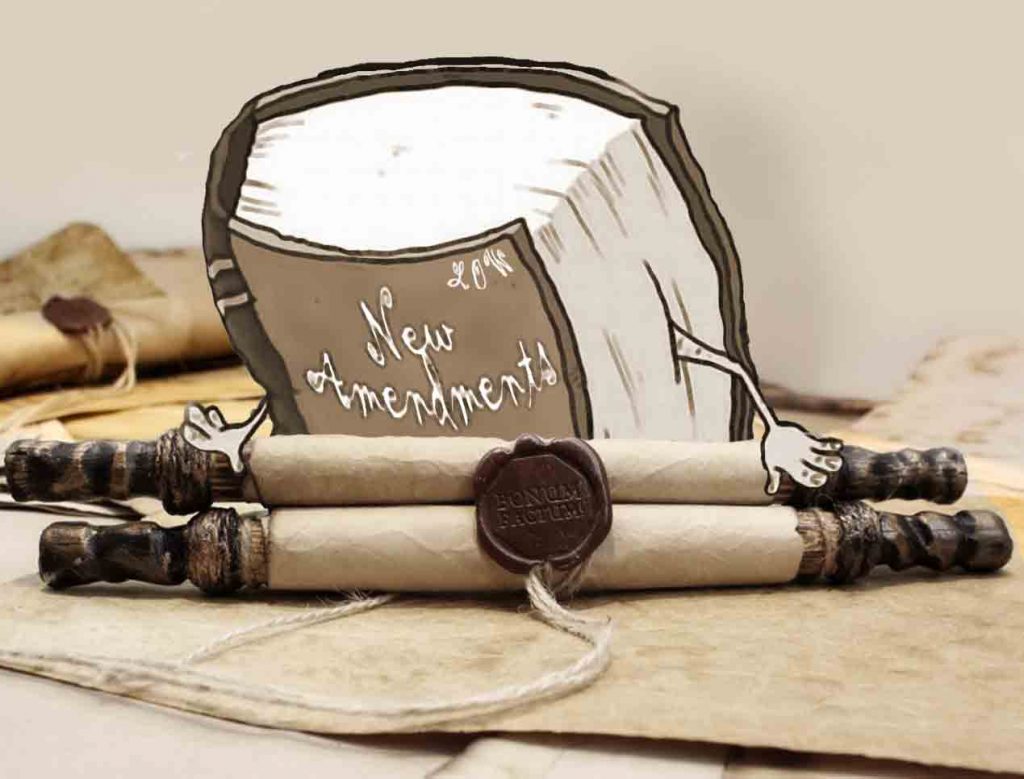The author describes the state of education and culture of the Russia-Germans after dismantling their autonomy in 1941. There were no professional women and men of letters after the Soviet-German War 1941–1945.
The political situation in the USSR in relation to its German population was rather hopeless. Even the central newspaper Neues Leben, created specifically for work among the “Soviet-Germans” and published by the central communist party newspaper Pravda (Truth), was not able to instigate the resolving of the simplest issues by the local party and Soviet authorities. Nevertheless, over the years, Neues Leben managed to contribute more and more to the revival of the Russia-German literature.
At the same time – for the first time after the liquidation of the Volga German Autonomous Soviet Socialist Republic and the deportation of all Russia-Germans – the group of the Russia-Germans activists emerged; it moved from silent patience and individual initiatives to the collective action to rehabilitate the Russia-Germans and to restore its statehood.
There were two delegations in 1965. The members of the second delegation were received by the Chairman of the Presidium of the Supreme Soviet Anastas Mikoyan. On 7 July 1965 Mikoyan concluded the meeting with these words: “The Soviet Germans behaved well during the war, after the war, and are behaving well now. They work well. Now it is impossible to conduct agriculture without Germans in the Virgin Lands (then a number of regions of Northern and Central Kazakhstan). You raise the question of the restoration of the republic. We are well aware that this would be the best solution to your question. But this is not possible, because you need to take half a million people and resettle them.”
Attempts to Resurrect the Culture of the Russia-Germans and their Autonomy
The state of Russia-German art and literature in 1955 was critical. The most talented ones were almost completely exterminated. None of the old intellectual writers survived. There were no eminent Russia-German writers after the war. There were no professional women and men of letters; writers were usually teachers who were engaged in literature along the way.
Some of the post-war older generation of writers, who had managed to do something before the war, were mainly peasants and workers by origin, and their way into life and literature fell on hard times, so that, having gone through a long and severe school of life, they usually did not have the opportunity to get a substantial education and a wide horizon. All these people had to work hard somewhere to feed their families and themselves to be able to take their first steps in literature.
There was not a single book-publishing house, not a single magazine, not even a single newspaper, where Russia-German writers could print their works if they wrote them. After the war the word “German” still meant “enemy”.
At the end of 1955, the “special settlement regime” for the Russia-Germans was abolished. At the end of the same year, the first German-language newspaper since the beginning of the war appeared in Barnaul, the administrative centre of the Altai region. It was named without much imagination, but ideologically sustained – Arbeit (Work). It quickly gained popularity among the German population. Its editor-in-chief was Russian V. S. Pestov; before that he worked in Berlin as a deputy editor-in-chief of the newspaper Tägliche Rundschau of the Soviet military administration.
But the experienced Russian editor und the editorial board that also included Russia-German correspondents and writers came into conflict with local authorities. A year and a half later, it was shut down. But on 15 June 1957, the first issue of the newspaper Rote Fane (Red Banner) was out of print in Slavgorod, the district centre of the Altai region and one more – Arbeitsbanner (The Banner of Labor) in Snamenka, the centre of the district with the same name. The latter existed till 1959.
On 1 May 1957, the first issue of the central German-language newspaper with the already more optimistic name Neues Leben (New Life) was published in Moscow. Like the newspaper Arbeit, the newspaper Neues Leben was headed by former employees of the Soviet occupation newspaper in Germany, people of Russian and Jewish nationalities.
They made great efforts to establish contacts with the “Soviet-German” population, tried initially to lead it “into the bosom of socialism”, to carry out some activities, because German newspapers were the only bodies in the USSR that conducted ideological, educational, and often organizational and cultural work among the German population in those difficult years.
However, the needed contact with readers was lacking at first. It was not an easy task to set up the network of correspondents, establish cooperation with writers. But the 20th Congress of the Communist Party (14–25 February 1956) and the subsequent restoration of the statehood of a number of other Soviet peoples, also unfairly repressed during the war, raised high hopes among the German population, which led to a certain rapprochement between the newspaper staff and readers.
However, the absence of representatives of the Russia-Germans in the editorial board, not to mention its chairmanship, could not but complicate the work of the newspaper. It was perceived as it really was: that newspaper was not of “Soviet-Germans”, but for “Soviet-Germans”.
The unfulfilled hopes of the people to restore the autonomy of Russia-Germans in the late 1950s, the severe suppression of their identity and cultural life led over time to the fact that the name of the newspaper Neues Leben (New Life) was perceived by its readers as a bitter mockery.
The political situation in the USSR in relation to its German population was rather hopeless. Even the central newspaper, created specifically for work among the “Soviet-Germans” and published by the central communist party newspaper Pravda (Truth), was not able to instigate the resolving of the simplest issues by the local party and Soviet authorities. Nevertheless, over the years, Neues Leben managed to contribute more and more to the revival of the Russia-German literature.
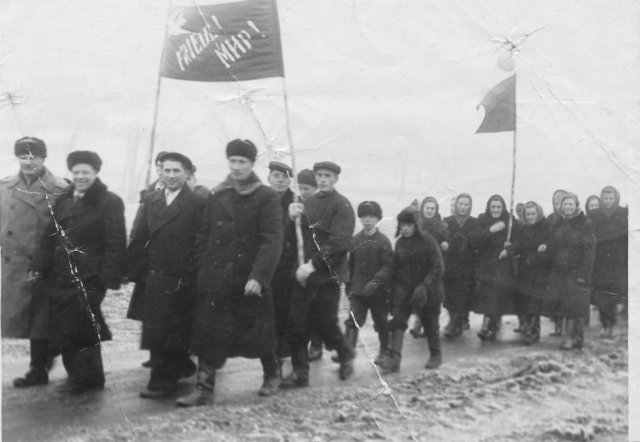
Private archive of Dr. Walther Friesen
At the same time – for the first time after the liquidation of the Volga German Autonomous Soviet Socialist Republic, the deportation of all Russia-Germans, after many years of slave labour behind barbed wire, after the end of the war, after terrible genocidal decrees and the regime of special commandants – the group of the Russia-Germans activists emerged; it moved from silent patience and individual initiatives to the collective action to solve the main issues of the people: its complete rehabilitation and restoration of its statehood.
Secretly, so that the authorities didn’t sniff anything out, signatures and money for the delegation to Moscow were gathered in different regions of the country, where Russia-Germans lived. In early January 1965, the delegation left for Moscow intending to demand the restoration of the Autonomy.
On 4 January 1965, the first meeting of delegates took place in the editorial office of Neues Leben. „We were treated quite friendly by the editorial board, even one of the offices was provided for us. Much later I came to the idea that our stay in the editorial office must have been promptly agreed with the relevant authorities… It is difficult to assume that the editorial board decided to shelter and help the delegation of the Russia-Germans on its own initiative.
There were 12 people in the delegation. Officially, we called ourselves the Initiative Group of Soviet Germans who came to Moscow on the issue of the restoration of the German autonomous republic. I pay attention to a very important point in this name: arrived on the issue of the restoration of the German autonomous republic, not the Volga German Autonomous Soviet Socialist Republic… The results of the first delegation could be assessed in different ways, and there were many points of criticism that could be found if desired. However, if we rise above the secondary, these results would appear very important.
First, the very fact of admission was of great importance to both the Soviet Germans and the local authorities where they lived. It became obvious that our problem and our initiatives cannot be ignored offhandedly anymore.
Secondly, even today it is surprising how a small group, which for the first time in 23 years raised such a burning issue, managed in such a short period of time and even in such an inconvenient New Year’s time to achieve admission almost at the highest level.
Thirdly, we were denied the restoration of the republic not because the Soviet leadership did not want to tackle this problem at all, but because they considered the territory of the former ASSR to be inhabited. Three conclusions followed out of this:
a) If we prove that the territory is not inhabited, the republic can be restored;
b) If the Volga version does not work, there are hopes for the restoration of statehood elsewhere;
c) For the first time after years of repression, forced-labour camps and discrimination, the authorities conducted a dialogue with the Soviet Germans at the level of arguments;
Fourthly, although this first small delegation was poorly prepared and it was refused on the basis of shaky arguments to restore the autonomous republic, it was promised to lift the ban on residence permits, to open German schools and publishing houses, to remove all restrictions and violations. The willingness was also expressed to consider various appeals of the German population, as well as to publish important decrees concerning them. We believed that it all meant we could have achieved more, if our delegation could have been prepared better, and if our arguments were more irrefutable.
And fifthly, delegates were given a direct answer to the directly posed question: there will be no persecution of the delegation participants. This meant that many future activists wouldn’t have to fear prosecution, and the second delegation could not only be more numerous, but could also act bolder, more confident.
Information about the first trip of the delegation reached the majority of the USSR’s Russia-German population; its members also contributed to it. Naturally, nothing about the delegation could be heard on the radio or appear in the newspapers. Neues Leben also could not publish anything, except a photo of the group received by the Chairman of the Presidium of the Supreme Soviet Anastas Mikoyan (1895–1978), calling it a “group of newspaper’s guests“.
The need for a second delegation was clear to many. The goals of this delegation were also clear: to repeat the demand for the restoration of the Russia-German statehood. It had to concentrate on the most important problems and refute any attempts to distract it by secondary issues. After the collection of the local impartial data, the main counter-argument about the sufficient inhabitation of the territory of the former Volga German Autonomous Soviet Socialist Republic could also be easily rebutted. The delegation had to be much more representative, and of course, to be ready for a longer stay in Moscow. As a consequence, more funds were needed.
On 3 June 1965, a delegation of 28 people arrived in Moscow. They represented Russia-Germans from 15 republics and regions. All delegates had letters of power with signatures: all in all 3,498 signatures. A Permanent Committee for the Development and Presentation of Materials to the Presidency of the Central Committee of the Communist Party of the Soviet Union and the Presidency of the Supreme Council of the USSR on the issue of the restoration of the Volga German Autonomous Soviet Socialist Republic and the complete rehabilitation of Soviet Germans was elected.
On June 8, the letters were sent to the leader of the Soviet Union Leonid Brezhnev and the Chairman of the Presidium of the Supreme Soviet Anastas Mikoyan. The appeals of Russia- Germans on 137 sheets with 3,498 signatures were attached to the letter to Brezhnev.
On 15 June 1965, a delegation of 30 Russia-Germans was accepted by a group of representatives of the Central Committee of the Communist Party of the Soviet Union.
On July 7, Mikoyan received the delegation again. He concluded the meeting with these words: “The Soviet Germans behaved well during the war, after the war, and are behaving well now. They work well. Now it is impossible to conduct agriculture without Germans in the Virgin Lands (then a number of regions of Northern and Central Kazakhstan). You raise the question of the restoration of the republic. We are well aware that this would be the best solution to your question. But this is not possible, because you need to take half a million people and resettle them.”
When efforts, even huge ones, do not bring the desired result, they are often talked about critically, or they wouldn’t be discussed at all, or one would try to forget them (“victory has a thousand fathers but defeat is an orphan”, said Napoleon). It’s very unfair. Because behind these efforts – faith, hope, self-sacrifice, often drama and tragedy of hundreds and thousands of people, their distorted future, broken souls”.
As a result of our efforts, there were no members of our two delegations who were happy. Not a single one. And all the more respect should be granted to these people, who knew what they were doing, knew what was waiting for them, and nevertheless went for it.
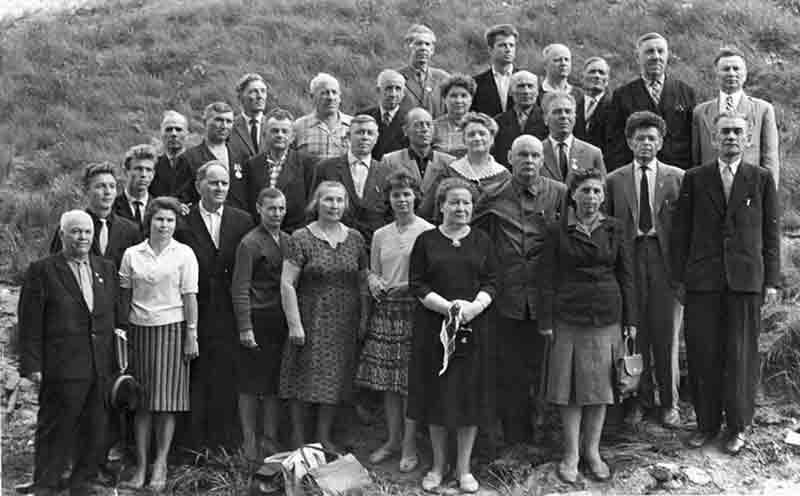
Detailed attribution has been made by Dr. Viktor Krieger
It is particularly noteworthy that the members of the delegation, despite the repressions they went through, despite their sometimes very old age and far from being in blooming health, fought with such a high sense of responsibility for the common cause, while so many cautiously watched their actions from afar.
On 3 November 1972, a decree was signed on the free choice of permanent residence for Russia-Germans in the USSR. The decree was not published. According to some reports, this decree was not widely publicized in the Soviet media at the request of the leaders of the Asian republics and Siberian regions, who were not interested in mass departure of the notably industrious German population.
Russia-Germans in the photo
1st row, from left to right
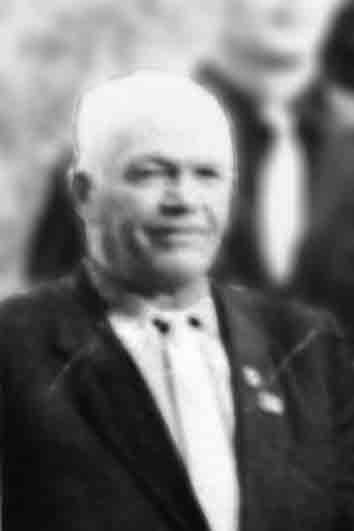
1 – Heinrich Wormsbecher
(Генрих [Андрей?] Фридрихович Вормсбехер; 1899–before 1980),
pensioner, came from Vilnius, the capital of the Lithuanian Soviet Socialist Republic (now – the capital of the Republic of Lithuania)
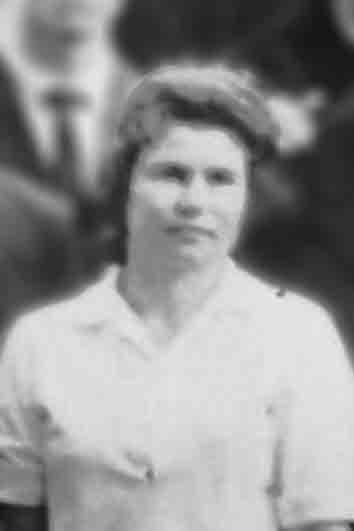
2 – Maria Steinbach
(Мария Александровна Штейнбах; 1933),
arts historian, teacher at a civil engineering vocational college, came from Frunze, the capital of the Kirghiz Soviet Socialist Republic (now – Bishkek, the capital of the Kyrgyz Republic)
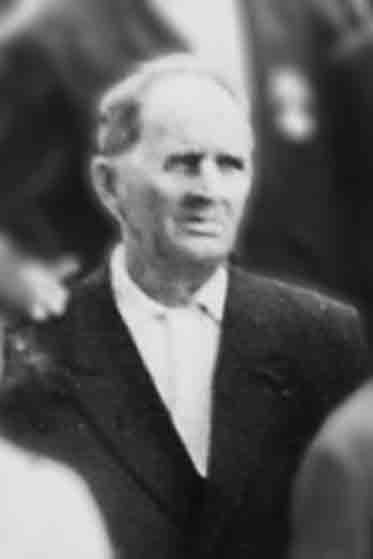
3 – Konstantin Bornemann
(Константин Карлович Борнеман; 1896 – before 1980),
pensioner, came from Kotovo, a village (since 1966 – town) in Volgograd Oblast of the Russian Federation
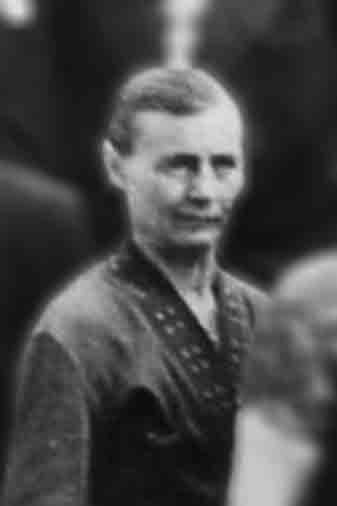
4 – Minna Busch
(Минна [Мария?] Яковлевна Буш; 1917–2004),
construction foreperson, came from Frunze (now – Bishkek, the capital of the Kyrgyz Republic)

5 – Amalia Jauk
(Амалия Богдановна [Готфридовна?] Яук; 1897–?),
pensioner, came from Krasnoyarsk, the administrative center of Krasnoyarsk Krai of the Russian Federation

6 – Minna Helfenbein
(Минна Фридриховна Гельфенбейн; 1926),
cashier, came from Krasnoturyinsk, a town in Sverdlovsk Oblast of the Russian Federation
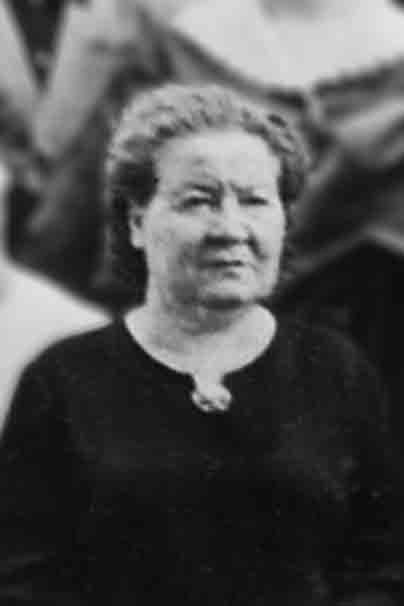
7 – Emilia Lerch
(Эмилия Генриховна Лерх; 1907–?),
pensioner, came from Oktyabrsky, an urban-type settlement in the Bashkir Autonomous Soviet Socialist Republic (now – Bashkortostan)

8 – Friedrich Schössler
(Фридрих Георгиевич Шесслер; 1902–1980),
pensioner, came from Abakan, the capital of the Khakas Autonomous Oblast (now – the Republic of Khakassia)
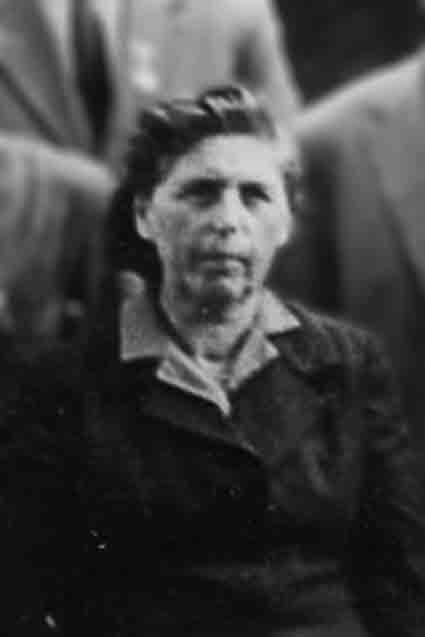
9 – Pauline Hill
(Паулина Ивановна Гиль; 1914–?),
teacher, came from Romanowka, a village in Altai Krai of the Russian Federation

Far left are two young men (bottom up)
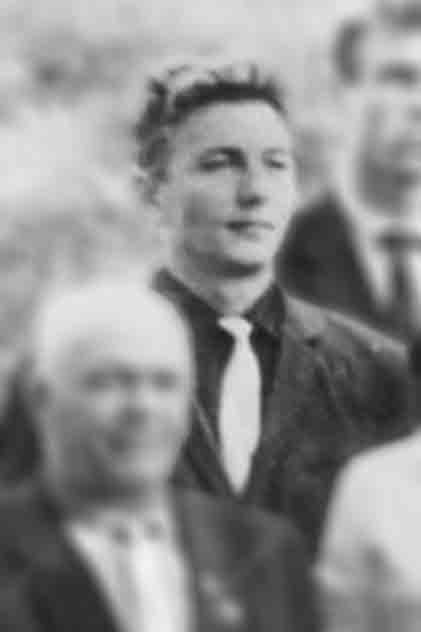
10 – Jakob Olfert
(Яков Яковлевич Ольферт; 1945),
teacher, came from Uzynagash, a village in Almaty Oblast of the Kazakh Soviet Socialist Republic (now – the Republic of Kazakhstan)
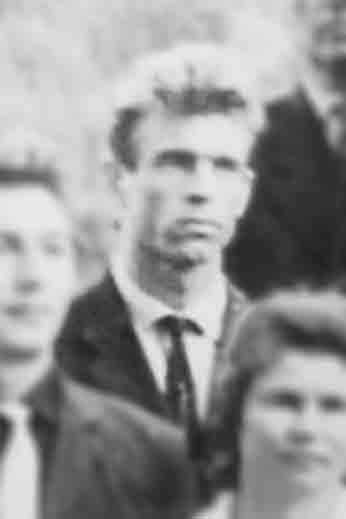
11 – Hugo Wormsbecher
(Гуго Густавович Вормсбехер; 1938),
teacher, came from Alma-Ata, at that time the capital of the Kazakh Soviet Socialist Republic (now – the Republic of Kazakhstan)

2nd row, from left to right

12 – Alexander Becker
(Александр Иванович Беккер; 1901–?),
pensioner, came from Krasnoturyinsk, a town in Sverdlovsk Oblast of the Russian Federation
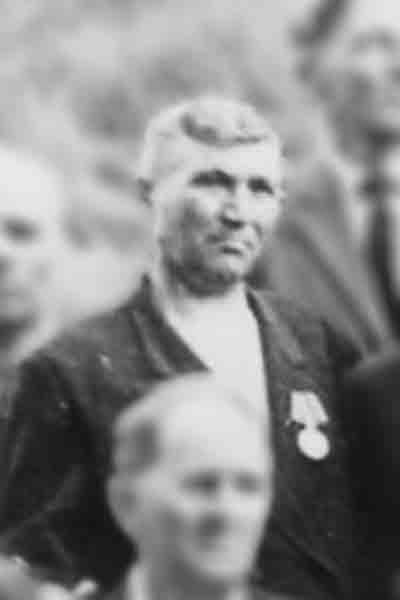
13 – David Goßmann
(Давид Генрихович Госман; 1905–?),
car driver, came from Shira, the administrative center of Shirinsky District of the Khakas Autonomous Oblast (now – the Republic of Khakassia)
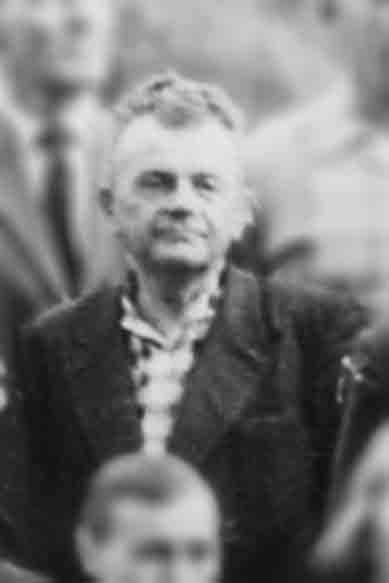
14 – Friedrich Helfenbein
(Фридрих Генрихович Гельфенбейн; 1904–1980),
pensioner, came from Krasnoturyinsk, a town in Sverdlovsk Oblast of the Russian Federation.
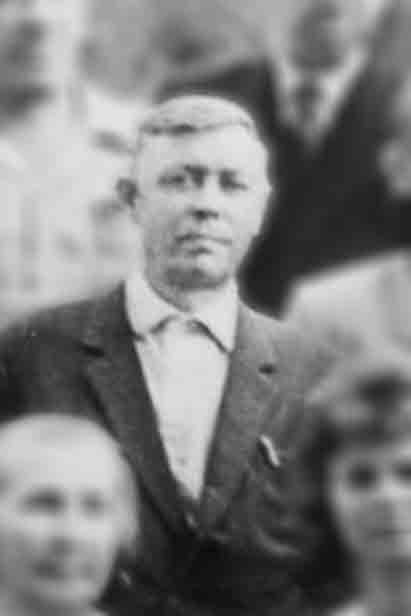
15 – Karl Winter
(Карл Петрович Винтер; 1913–?),
accountant, came from Krasnoyarsk, the administrative center of Krasnoyarsk Krai of the Russian Federation
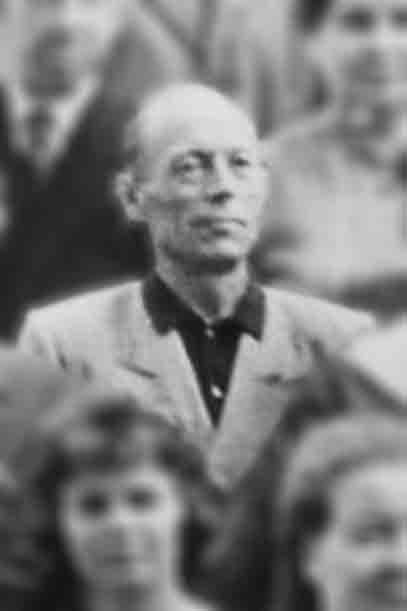
16 – Artur Streck
(Артур Александрович Штрек; 1919–1990),
carpenter, came from Frunze (now – Bishkek, the capital of the Kyrgyz Republic)
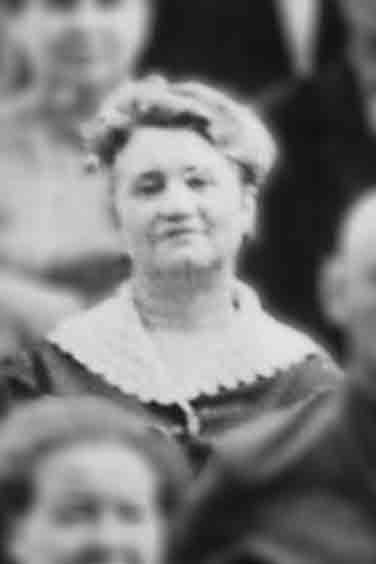
17 – Maria Vogel
(Мария Иосифовна Фогель; 1910–1972),
journalist from Moscow
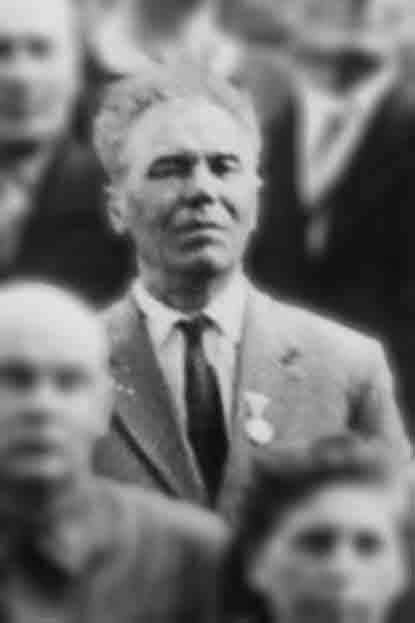
18 – Albert Barbier
(Альберт Петрович Барбье; 1907–?)
came from Frunze (now – Bishkek, the capital of the Kyrgyz Republic)

19 – Karl Welz
(Карл Давыдович Вельц; 1911–1991),
writer, came from Tselinograd (now – Nur-Sultan, the capital of the the Republic of Kazakhstan)
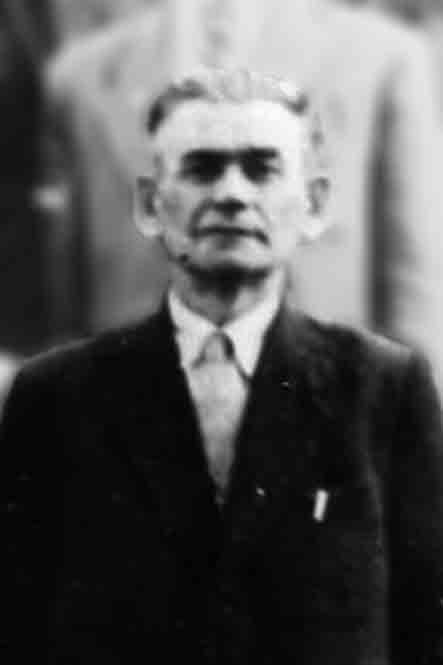
20 – Heinrich Kaiser
(Генрих Филиппович Кайзер; 1901–1967),
pensioner, came from Chernogorsk, a town in the Khakas Autonomous Oblast (now – the Republic of Khakassia)

3rd row, from left to right
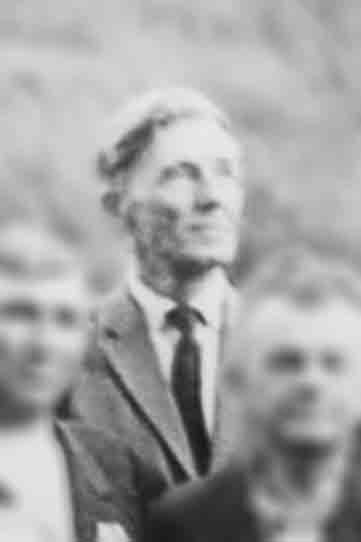
21 – Ernst Kontschak
(Эрнст Карлович Кончак; 1903–1979),
writer, came from Talgar, a town in Almaty Oblast of the Kazakh Soviet Socialist Republic (now – the Republic of Kazakhstan)

22 – Johann Brug
(Бруг Иван Карлович; 1899–1978),
legal counsel, came from Frunze (now – Bishkek, the capital of the Kyrgyz Republic)
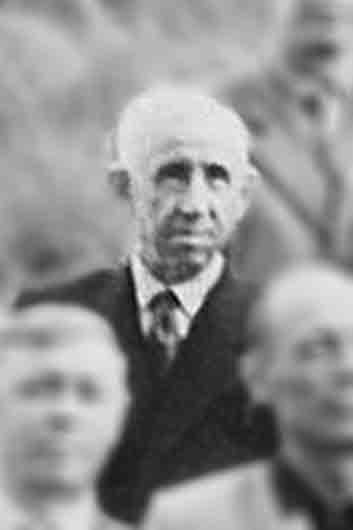
23 – Friedrich (Ferdinand) Neuwirt
(Фридрих (Фердинанд) Готлибович Нейвирт; 1899–?),
pensioner, came from Barnaul, the administrative center of Altai Krai of the Russian Federation

24 – Therese Chromowa-Schilke
(Терезиа Христиановна Хромова (Шильке); 1919–2004),
teacher of German language at Kyrgyz National University in Frunze (now – Bishkek, the capital of the Kyrgyz Republic)

25 – Jakob Franke
(Яков Филиппович Франке; 1898–?),
pensioner, came from Yemanzhelinsk, a town in Chelyabinsk Oblast of the Russian Federation

Top row, from left to right
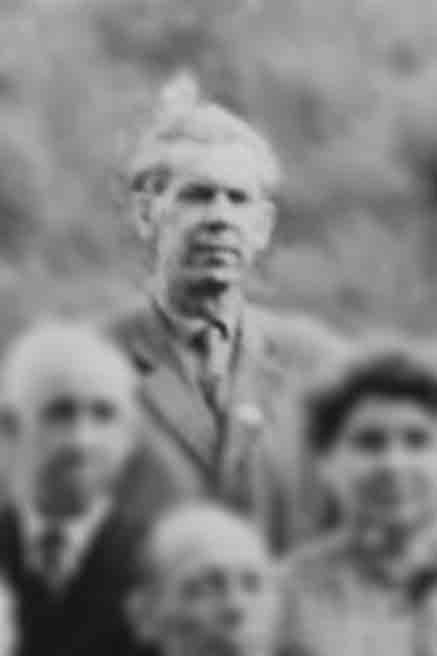
26 – Jakob Rosental
(Яков Кондратьевич Розенталь; 1907–?),
economist, came from Ishimbay, a town in the Bashkir Autonomous Soviet Socialist Republic (now – the Republic of Bashkortostan)

27 – Waldemar (Wladimir) Hahnstein
(Владимир Фридрихович Ганштейн; 1936),
engineer, came from Karaganda, an industrial city in the Kazakh Soviet Socialist Republic (now – the Republic of Kazakhstan)

28 – Johann Kronewald
(Кроневальд Иван [Иоганн] Иванович; 1919–1995),
journalist, university teacher, came from Nizhny Tagil, an indusrial city in Sverdlovsk Oblast of the Russian Federation
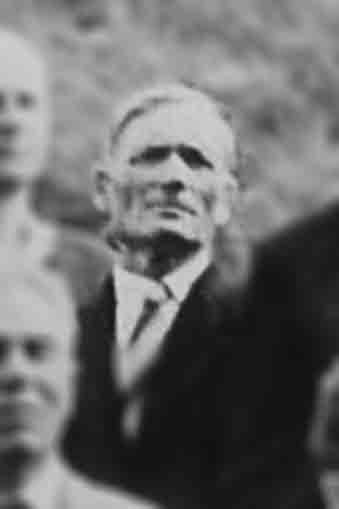
29 – Friedrich Fritzler
(Фридрих Фридрихович Фрицлер; 1903–1986),
pensioner, came from Kaskelen, a town in the Kazakh Soviet Socialist Republic (now – the Republic
of Kazakhstan)
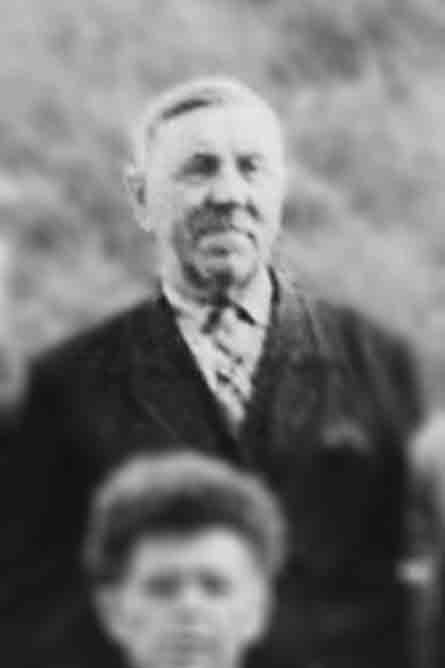
30 – Johann Enders
(Иван [Иоганн] Яковлевич Эндерс; 1896–before 1980),
pensioner, came from Krasnoturyinsk, a town in Sverdlovsk Oblast of the Russian Federation
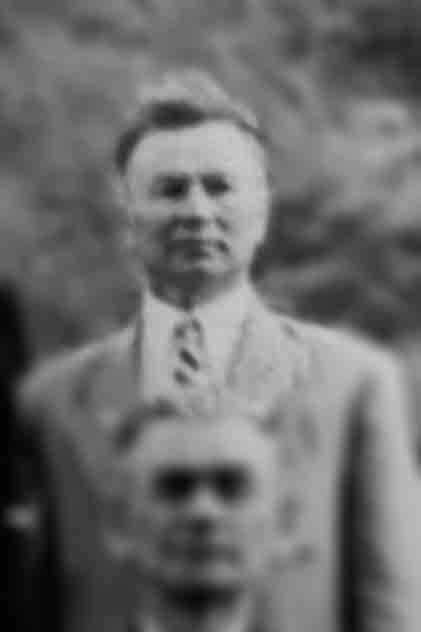
31 – Adolf Bersch
(Адольф Яковлевич Берш; 1915–2010),
teacher, came from Pallasovka, a village in Volgograd Oblast of the Russian Federation

The following Members of the Delegation are not in this Photo
32 – Johann Warkentin
(Иоганн [Иван] Абрамович Варкентин; 1920–2012),
writer, came from Alma-Ata, at that time the capital of the Kazakh Soviet Socialist Republic (now – the Republic of Kazakhstan)
33 – Dominik Hollmann
(Доминик Иосифович Гольман; 1899–1990),
writer, came from Krasnoyarsk, the administrative center of Krasnoyarsk Krai of the Russian Federation
34 – Emma Schneider
(Эмма Шнейдер; 1909–?),
pensioner, came from Oktyabrsky, an urban-type settlement in the Bashkir Autonomous Soviet Socialist Republic (now – Bashkortostan)
35 – Benjamin Hirschfeld
(Бенжамин [Вениамин] Гиршфельд; 1911–?),
teacher, came from Kirovskoye, a village in the Kirghiz Soviet Socialist Republic (now – the Kyrgyz Republic)
36 – Frieda Rosental
(Фрида Яковлевна Розенталь; 1912–?),
accountant, came from Ishimbay, a town in the Bashkir Autonomous Soviet Socialist Republic (now – the Republic of Bashkortostan)
37 – Paul Gräber
(Павел Павлович Гребер; 1929),
construction engineer, came from Frunze (now – Bishkek, the capital of the Kyrgyz Republic)
38 – Benjamin Hinz
(Вениамин Александрович Гинц; 1931),
economist, came from Alma-Ata, at that time the capital of the Kazakh Soviet Socialist Republic (now – the Republic of Kazakhstan)
39 – Reinhard Köln
(Рейнгард Рейнгардович Кёльн; 1900–1988),
journalist, came from Krymsk, a town in Krasnodar Krai of the Russian Federation.

Additional Participants who joined the Delegation and took part in the Meeting with the Chairman of the Presidium of the Supreme Soviet Anastas Mikoyan on 7 July 1965
40 – Kurt Wiedmaier
(Курт Павлович Видмейер [Видмайер]; 1936–2015),
journalist from Moscow
41 – Alexander Dotz
(Александр Иванович Дотц; 1890–after 1965),
pensioner from Moscow
42 – Anna Paul-Horst
(Анна Георгиевна Пауль-Хорст 1902–1984),
pensioner from Moscow
43 – Friedrich Süptiz
(Фридрих Фердинандович Сиптиц; ?);
artist, came from Semipalatinsk (now – Semey), a city in the Kazakh Soviet Socialist Republic (now – the Republic of Kazakhstan).
Hugo Wormsbecher
Hugo (Gustavovich) Wormsbecher was born in 1938 in the Autonomous Soviet Socialist Republic of the Volga Germans. In 1941, he was exiled to Siberia, where he grew up. He worked as a turner, electrician, in a topographical expedition in the semi-deserts of Kazakhstan and in the Alatau Mountains. He worked as a teacher, then – as a staff of the editorial boards of newspapers “Freundschaft” (Friendship) in Zelinograd (today Nur-Sultan) and “Neues Leben” (New Life) in Moskau.
Hugo Wormsbecher graduated from the Moscow Polygraphic University as a certified editor. He is the author of several books, novels, short stories, screenplays and numerous publications on history, culture, literature, current problems of the Russia-Germans. Hugo Wormsbecher has been a member of the USSR’s Association of Journalists since 1969 and a member of the Writers’ Association of the USSR since 1988. Hugo Wormsbecher has been in the midst of the movement of the Russia-Germans for their rehabilitation since 1963.
He participated in the first two Russia-German delegations to Moscow in 1965. Since 1989, he has been fully integrated into the movement of the Russia-Germans: he is one of the founders of the society ‘Wiedergeburt’ (Rebirth), of the International Association of the Russia-Germans, and of the Federal Cultural Autonomy of the Russia-Germans.
Hugo Wormsbecher heads the expert group (Moscow-Berlin-Dortmund) for matters of the Russia-Germans. He lives in Moscow.

